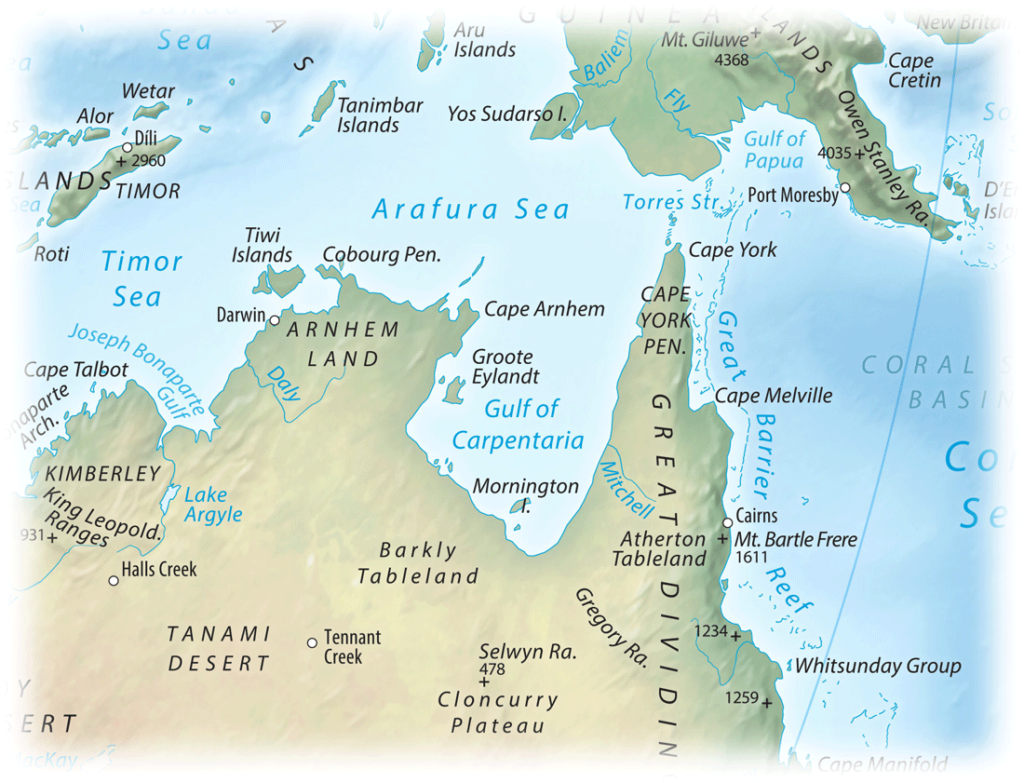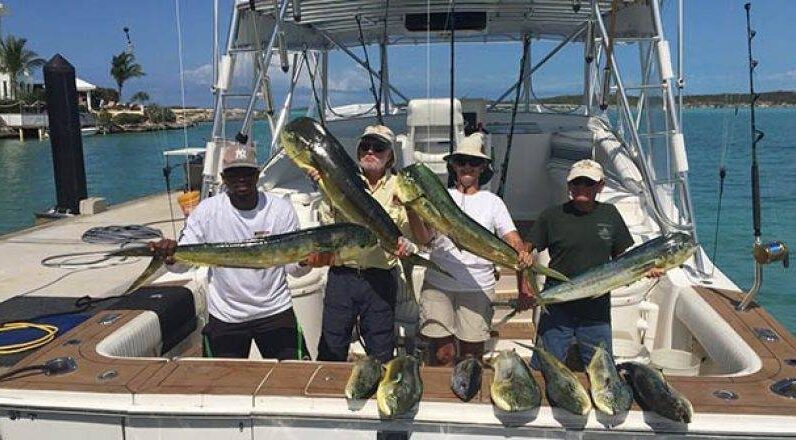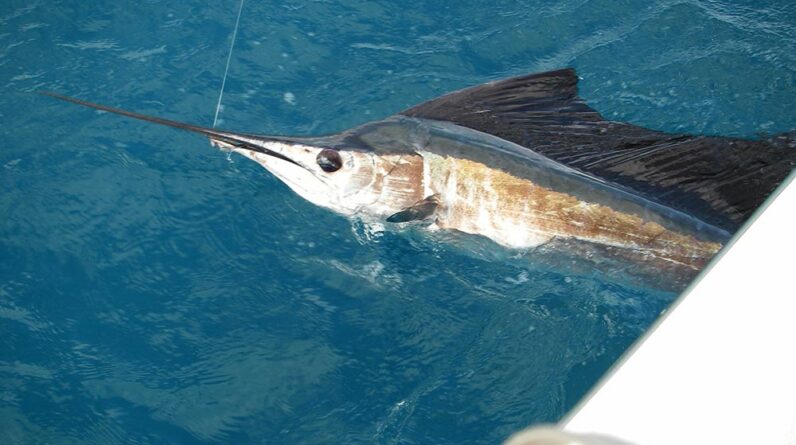Nestled in the northern reaches of Australia, the Gulf of Carpentaria is a haven for sport fishing enthusiasts, offering an array of unique and bountiful ecosystems. Stretching between the Northern Territory and Queensland, the Gulf encompasses a vast and varied landscape that includes mangrove-lined estuaries, thriving coral reefs, lush coastal wetlands, and expansive open waters. This geographical diversity creates a rich tapestry of marine life, making it an ideal destination for anglers from around the globe in search of an unforgettable fishing experience.
The Gulf of Carpentaria is home to a myriad of sought-after fish species, each presenting a unique challenge for sport fishing aficionados. From the mighty barramundi, known for its acrobatic leaps and dogged resistance, to the powerful giant trevally and the sleek Spanish mackerel, there’s no shortage of exciting targets for anglers to pursue. Whether you prefer the thrill of battling a fish in the estuaries or the open sea, the Gulf’s variety ensures every fishing trip is an adventure.
To make the most of your fishing expedition, Cheerfulfisherman.com delves into the essential aspects of sport fishing in the Gulf of Carpentaria. Discover the best fishing locations, including hotspots like Weipa, Karumba, and Borroloola, each with its unique appeal and plentiful fish stocks. Learn about the optimal times to fish, with the peak season typically falling between April and September, when the weather is cooler and the fish are more active.
Whether you’re a seasoned angler or a novice looking to cast your first line, this guide is your gateway to an unforgettable sport fishing experience in the Gulf of Carpentaria. Dive in and explore everything you need to know to plan the ultimate fishing adventure in this stunning and ecologically diverse region.
How to Get there from Miami, FL
To get from Miami, Florida, to the Gulf of Carpentaria in Australia, you’ll need to take a combination of flights and land transportation. Here’s a basic outline of how you might do it:
- Flights to Australia:
- From Miami to a Major Hub: Start by booking a flight from Miami International Airport (MIA) to a major hub that offers flights to Australia. Common options are Los Angeles (LAX), Dallas/Fort Worth (DFW), or New York (JFK).
- From a Major Hub to Australia: From one of these hubs, book a flight to a major Australian city. Sydney (SYD) and Brisbane (BNE) are common entry points.
- Traveling Within Australia:
- Domestic Flights: Once in Australia, you will need to take a domestic flight to a city closer to the Gulf of Carpentaria. Cairns (CNS), Darwin (DRW), and Townsville (TSV) are common options.
- Final Approach to the Gulf of Carpentaria: From one of these cities, you might need to rent a car or use other local transportation to reach the Gulf of Carpentaria. Normanton and Karumba in Queensland, or Borroloola in the Northern Territory, are towns near the Gulf.
- Planning and Coordination:
- Make sure to consider visa requirements and travel regulations when planning your trip.
- Given the remoteness of the Gulf of Carpentaria, it’s wise to plan accommodations, transport, and other logistics in advance.
- Be prepared for varying conditions, as the Gulf is in a remote part of Australia with limited infrastructure in some areas.

Popular Fish Species in the Gulf of Carpentaria
The Gulf of Carpentaria is home to a wide variety of fish species, each offering a unique challenge for sport fishers. Here are some of the most sought-after fish in the region:
- Barramundi: Known for their acrobatic jumps and hard-fighting nature, barramundi are a favorite among anglers. These fish are commonly found in mangroves and estuaries, where they prey on smaller fish and crustaceans.
- King Threadfin Salmon: Threadfin salmon are another popular target, often found in estuarine and coastal areas. They are known for their distinctive whiskers and vibrant coloring.
- Spanish Mackerel: Spanish mackerel are renowned for their speed and agility, making them a thrilling catch for sport fishers. They are typically found in offshore waters and coral reefs.
- Giant Trevally (GT): The Giant Trevally, or GT, is one of the most challenging fish to catch due to its immense power and aggressive behavior. They are commonly found around coral reefs and rocky outcrops.
- Queenfish: Queenfish are known for their agility and spectacular jumps. They are often found in coastal and estuarine waters.
- Mangrove Jack: Mangrove jack are aggressive predators that inhabit mangroves and estuaries. They are known for their powerful strikes and resistance during the fight.
Top Fishing Locations in the Gulf of Carpentaria
The Gulf of Carpentaria offers a variety of fishing environments, each with its own set of challenges and rewards. Here are some of the top fishing locations in the region:
- Weipa: Weipa is one of the most popular fishing destinations in the Gulf of Carpentaria. Located in Far North Queensland, Weipa offers easy access to both freshwater and saltwater fishing spots. Anglers can target barramundi, queenfish, and Spanish mackerel, among others.
- Karumba: Karumba, situated on the southern coast of the Gulf, is known for its excellent barramundi fishing. The Norman River flows through this area, providing rich feeding grounds for various fish species.
- Groote Eylandt: Groote Eylandt, part of the Northern Territory, offers incredible offshore and inshore fishing opportunities.Coral reefs surround this remote island, attracting species like GTs, queenfish, and Spanish mackerel.
- Nhulunbuy (Gove): Nhulunbuy, located on the Gove Peninsula, provides a mix of estuarine and offshore fishing experiences. It’s an ideal location for anglers seeking a variety of species, including barramundi, threadfin salmon, and GTs.
- Mornington Island: Mornington Island is one of the larger islands in the Gulf of Carpentaria, known for its rich biodiversity. The surrounding waters are ideal for targeting barramundi, mangrove jack, and queenfish.

Fishing Techniques and Gear
Fishing in the Gulf of Carpentaria requires a diverse set of techniques and gear, depending on the target species and location. Here’s an overview of common techniques and recommended gear:
- Lure Fishing: Lure fishing is a popular technique for targeting barramundi, queenfish, and GTs. Hardbody lures, soft plastics, and surface poppers are commonly used. This technique allows anglers to cover a wide area and mimic the movements of prey.
- Live Bait Fishing: Using live bait is effective for species like barramundi and threadfin salmon. Popular bait includes live prawns, mullet, and herring. This technique is particularly useful in estuarine and mangrove environments.
- Trolling: Trolling is commonly used for offshore species like Spanish mackerel. Anglers use deep-diving lures or skirted trolling lures to cover large distances while targeting fast-swimming fish.
- Fly Fishing: Fly fishing is a specialized technique that attracts enthusiasts to the Gulf of Carpentaria. Anglers use fly rods and flies to target barramundi, queenfish, and other species. This technique requires skill and patience but can be highly rewarding.
- Recommended Gear:
- Rods and Reels: A medium-heavy spinning or baitcasting rod and reel combo is ideal for most species in the Gulf of Carpentaria. Fly anglers should choose an 8 to 10-weight fly rod.
- Lines and Leaders: Use braided lines for strength and fluorocarbon leaders for abrasion resistance.
- Terminal Tackle: Equip your tackle box with a variety of hooks, sinkers, and swivels to accommodate different techniques.
Fishing Regulations and Conservation
Fishing in the Gulf of Carpentaria is subject to various regulations to ensure sustainability and conservation. It’s crucial for anglers to understand and comply with these rules to protect the environment and fish populations. Here are some key regulations and conservation tips:
- Fishing Licenses: In Queensland, anglers require a fishing license, while in the Northern Territory, there are no recreational fishing licenses required. However, always check for specific regulations based on the location and target species.
- Size and Bag Limits: Size and bag limits are in place to protect fish populations. For example, barramundi typically have minimum and maximum size limits, as well as bag limits. Ensure you are aware of these limits for each species you target.
- Catch and Release: Practicing catch and release helps maintain fish populations and ensure the sustainability of the sport fishing industry. Use proper handling techniques and consider using barbless hooks to minimize harm to the fish.
- Marine Protected Areas: Authorities have designated some areas in the Gulf of Carpentaria as marine protected areas or sanctuary zones. It’s important to be aware of these areas and avoid fishing in restricted zones.
- Environmental Conservation: Respect the environment by avoiding littering, minimizing disturbance to wildlife, and adhering to ethical fishing practices. Contribute to conservation efforts by supporting local initiatives and participating in beach cleanups.

Best Times to Fish in the Gulf of Carpentaria
The timing of your fishing trip can significantly impact your success in the Gulf of Carpentaria. Here’s an overview of the best times to fish in the region:
- Dry Season (May to October): Most people consider the dry season the best time for sport fishing in the Gulf of Carpentaria. During this period, water levels are lower, and fish are more concentrated in estuaries and coastal areas. This is an excellent time for targeting barramundi, threadfin salmon, and queenfish.
- Wet Season (November to April): The wet season brings heavy rainfall and flooding, which can make fishing challenging in some areas. However, this is also when barramundi migrate to spawn, offering unique opportunities for anglers. Offshore fishing for species like Spanish mackerel and GTs remains productive during this season.
- Moon Phases: Pay attention to moon phases, as they can affect fish behavior and feeding patterns. Some anglers prefer fishing during the new moon or full moon, as these periods often result in increased activity.

Practical Tips for a Successful Fishing Trip
To ensure a successful and enjoyable sport fishing trip to the Gulf of Carpentaria, consider the following practical tips:
- Research and Planning: Plan your trip in advance, considering the best locations, timing, and accommodations. Research local guides and charters to maximize your chances of success.
- Safety and Weather Preparedness: The Gulf of Carpentaria can experience extreme weather conditions, especially during the wet season. Ensure you have appropriate safety gear, including life jackets, first aid kits, and emergency communication devices. Check weather forecasts regularly.
- Guided Fishing Tours: Consider booking a guided fishing tour with experienced local guides. They can provide valuable insights into the best fishing spots and techniques, enhancing your overall experience.
- Respect Local Culture: The Gulf of Carpentaria is home to Indigenous communities with deep cultural connections to the land and sea. Show respect for local customs and seek permission when accessing traditional lands.
- Record and Share Your Experience: Capture your fishing adventures through photos and videos. Sharing your experience on social media and fishing forums can inspire others and create lasting memories.
Conclusion
Sport fishing in Australia’s Gulf of Carpentaria is an unparalleled experience for anglers who seek not only a wide variety of fish species but also stunning natural landscapes. The Gulf, located in the northern part of Queensland and the Northern Territory, is rich in biodiversity, making it an angler’s paradise. Whether you’re casting a line in the mangrove-lined estuaries for the elusive barramundi or heading offshore to test your strength against a feisty Giant Trevally, the Gulf of Carpentaria offers a diverse range of fishing experiences that cater to all skill levels.
One of the unique aspects of fishing in the Gulf is the abundance of both freshwater and saltwater environments. This allows anglers to switch between different types of fishing, from fly-fishing in tranquil rivers to deep-sea trolling in the open ocean. The region also hosts other popular species like mangrove jack, queenfish, and Spanish mackerel, ensuring that every fishing expedition overflows with excitement.

However, with great fishing opportunities comes great responsibility. Local authorities encourage anglers to follow regulations like catch limits and size restrictions to keep fish populations sustainable. Practicing ethical fishing techniques, like catch and release, and minimizing environmental impact by avoiding damage to coral reefs and mangroves, are crucial in preserving the beauty and productivity of this unique ecosystem.
Aside from the thrilling fishing experiences, the Gulf of Carpentaria offers breathtaking scenery, with stunning sunrises and sunsets over the water, lush mangroves, and the occasional sighting of dolphins or turtles. It’s a place where you can connect with nature while enjoying the sport you love. By respecting the environment and adhering to sustainable fishing practices, anglers can help ensure that this remarkable fishing destination remains vibrant for years to come.






